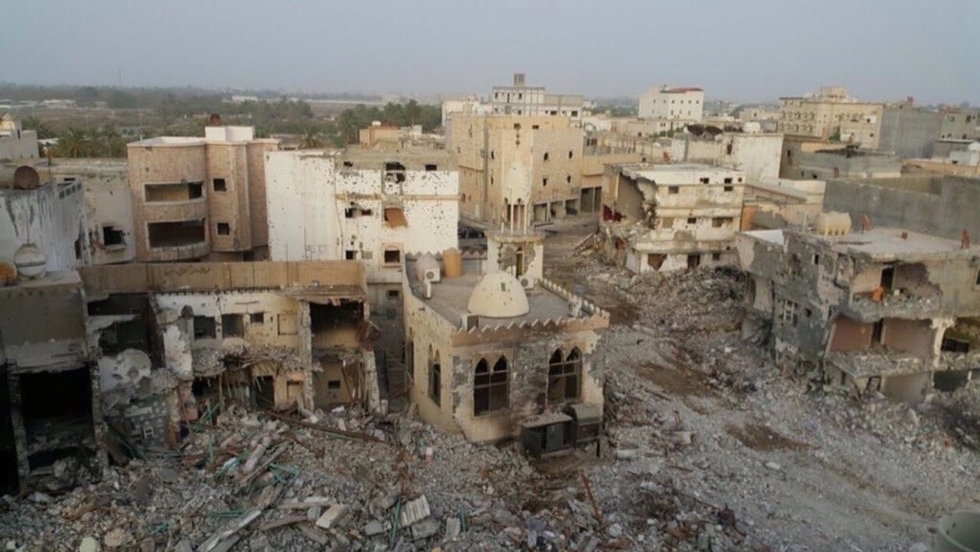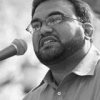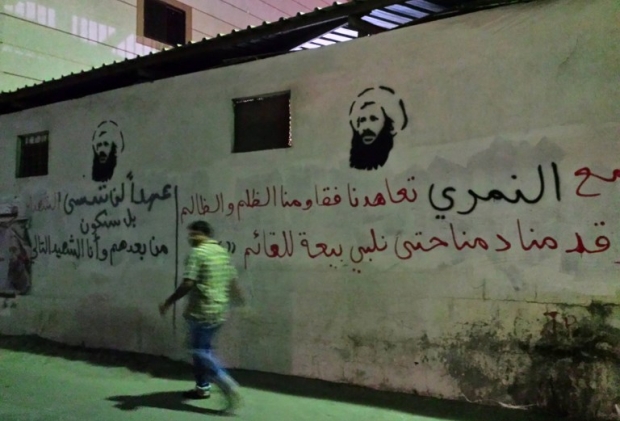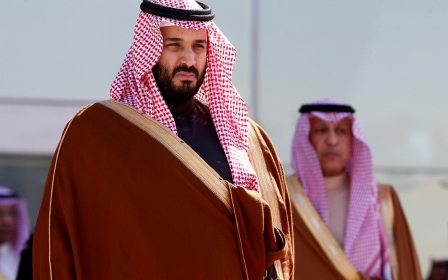Western complicity in Saudi Arabia’s destruction of Awamiya

The pictures show a town ravaged by conflict, rubble-filled streets alongside empty husks of buildings framed against a smoke-streaked sky.
This is the Saudi town of Awamiya, a Shia-majority city in the Eastern Province of the kingdom. Since 10 May, Awamiya has been engulfed in violence as government security forces battle armed Shia residents resisting the demolition of the historic and culturally significant Almosara neighbourhood.
Since 10 May, Awamiya has been engulfed in violence as government security forces battle armed Shia residents resisting the demolition of the historic and culturally significant Almosara neighbourhood
In December 2016, the Eastern Province government announced it would demolish the Almosara neighbourhood, which, at 400 years old, is one of the oldest areas of Awamiya with a rich history as a centre of regional trade that spanned the Arabian Gulf. Its architecture is reminiscent of the era of Ottoman dominance of the area and it is characterised by narrow streets, clay buildings, historic houses and Shia mosques and religious centres.
To facilitate the demolition, authorities called on the residents to leave the area. When residents refused, citing the lack of adequate compensation for their evacuation, the government took steps to force people from their homes. In January, the provincial government cut the power to the neighbourhood and banned power companies and aid organisations from providing any assistance to the locals, although the area was experiencing scorching temperatures.
The plight of the residents caught the eye of three UN experts, the special rapporteurs on poverty, on housing, and on cultural rights, who have expressed serious concern over the Saudi government’s heavy-handed measures. They warned about widespread human rights violations, including an increase in poverty, a lack of alternative housing options, and the destruction of cultural heritage.
Under siege, under fire
Ignoring these concerns, on 10 May, security forces stormed into Awamiya at 3.30am. They headed for Almosara, accompanied by bulldozers and intent on the destruction of the neighbourhood. Pictures and video recordings portray an invasion, with cars on fire and walls covered with bullet-holes. In the chaos, security forces shot and killed one man, Ali Abdul Aziz Abu Abdullah, and injured 14 others.
Then on 19 May, nine days after the invasion and as the violence continued, President Donald Trump visited Riyadh and met with King Salman. During his meeting Trump dismissed human rights concerns, commenting “we are not here to lecture – we are not here to tell other people how to live or what to do”. He also announced an arms sale to the kingdom that could total over $100bn and add up to $350bn over 10 years.
By the third week of the invasion, in late May, security forces had killed at least five civilians and evicted hundreds of residents from their homes. Authorities’ use of excessive force and indiscriminate fire, combined with a blockade, has put all of Awamiya in a state of siege that severely affects the nearly 30,000 remaining residents.
The situation deteriorated markedly after the 11 June death of a security force officer. In response to his death, authorities went on a rampage, firing indiscriminately at civilians and injuring more than 30, including women and children and damaging cars and houses. Among those who were wounded was Mohammed al-Nimr, brother of the executed Sheikh Nimr al-Nimr and the father of Ali Mohammed al-Nimr, a young peaceful Shia activist on death row because of his participation in a peaceful protest.
Then, on 26 July, the violence escalated sharply as the siege entered a new dimension. That day, residents counted more than 100 explosions in residential neighbourhoods coming from government artillery. In a different part of town, security forces raided a residential building, breaking down the doors and abducting male residents, who have not been heard from since. Officials also shot and killed three Saudi citizens and reportedly also killed three foreign migrant workers.
Locals also reported a large military build-up of the Saudi Arabian National Guard (SANG) on the outskirts of Awamiya in the Amir Nayef Sport City. The SANG’s involvement would mark the first time since 1979 that it has intervened in domestic affairs. In 1979, the SANG violently suppressed mass protests in Qatif and Awamiya, with helicopter gunships firing into crowds of Shia protesters.
Arms sales and green lights
The Saudi government’s ongoing military operation in Awamiya is buttressed and sustained by the complicity of Western governments, in particular the US.
For a long time, the US has provided weapons and training to Saudi Arabia’s security forces, including its special operations and counter-terrorism forces, both of which are engaged in Awamiya. The US has also sold Saudi Arabia billions of dollars' worth of weapons, underwriting the kingdom’s military.
Coming in the midst of the violent crackdown in Awamiya, Trump's rhetoric has given the Saudi government a green light to continue its prosecution of the conflict in the Eastern Province
The weapons sales increased dramatically during president Obama’s terms in office. However, even as he sold more arms to Saudi Arabia than any other administration, he had at least been a vocal advocate of conducting a foreign policy that respects human rights.
Trump has shown no such inclination to even pay lip service to human rights. Instead, during his visit to Saudi Arabia, he was blatantly dismissive of human rights concerns as he crowed about increasing arms sales to the kingdom. Coming in the midst of the violent crackdown in Awamiya, his rhetoric has given the Saudi government a green light to continue its prosecution of the conflict in the Eastern Province.
It’s not just the US, though that has played a part in arming the kingdom. On 28 July, videos emerged of Saudi forces deploying Canadian-made Light Armoured Vehicles (LAVs) in Awamiya. The vehicles, which are produced by Terradyne Armoured Vehicles, were sold to Saudi Arabia as part of a $15bn arms deal approved in 2016.
The revelation that Saudi Arabia was using Canadian LAVs has led the Canadian government to call for an investigation into the reports of their use, and if necessary a review, of the arms sales. Germany has already cut down on its arms exports, including to Saudi Arabia, while some German companies have already stopped selling weapons to Saudi Arabia altogether, such as Heckler & Koch, over concerns of human rights violations.
CARTOON:
The United States can, and should, take similar steps. Members of Congress have already expressed their opposition to a tank sale to Saudi Arabia and the sale of precision-guided missiles to the kingdom, illustrating growing discontent with US support for the Saudi government and Saudi Arabia’s human rights abuses.
The Trump administration must halt its arms sales and military support to the kingdom and call on the Saudi government to immediately withdraw from Awamiya. Furthermore, the US should make any future arms sales or weapons transfers to the kingdom contingent upon significant and serious human rights reforms, especially concerning the treatment of its Shia minority in the Eastern Province.
- Husain Abdulla is the executive director of Americans for Democracy & Human Rights in Bahrain.
The views expressed in this article belong to the author and do not necessarily reflect the editorial policy of Middle East Eye.
Photo: Awamiya in Saudi Arabia's Eastern Province (Twitter/@BH_14DETAINEES)
New MEE newsletter: Jerusalem Dispatch
Sign up to get the latest insights and analysis on Israel-Palestine, alongside Turkey Unpacked and other MEE newsletters
Middle East Eye delivers independent and unrivalled coverage and analysis of the Middle East, North Africa and beyond. To learn more about republishing this content and the associated fees, please fill out this form. More about MEE can be found here.






